| Aviation In
June 1910 the first all-British flying meeting took
place at Dunstall Park, only 4 years after the first
ever flight in Europe. The newspapers reported that by
the beginning of the month 6 hangars had been erected,
and Bleriot, Humber and Star machines were already
there. A Mr. Hartill of Cleveland Street, Wolverhampton
constructed a machine especially for the event.
Unfortunately there was almost no flying because of high
winds, heavy rain, and a dispute with some pilots over
payment of their hotel expenses.
The meeting began on 27th June and lasted for 5 days,
ending on 2nd July. It was held
under the auspices of the Midland Aero Club, which had
been formed the previous year. Its headquarters were at
the Grand Hotel in Birmingham and the club president was
the Earl of Dartmouth. The official programme listed a
varied selection of events. Prizes were awarded for the
flight of the longest duration, cross-country flying,
passenger carrying, figure flying, bomb throwing etc. |
|
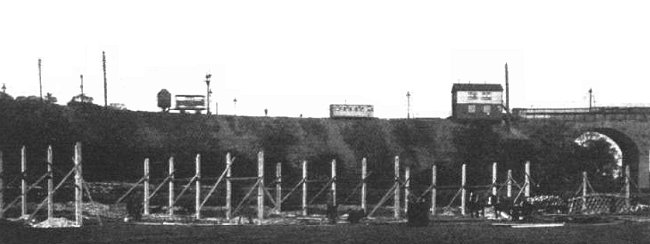
Preparations for the event
including the erection of the aeroplane sheds. |
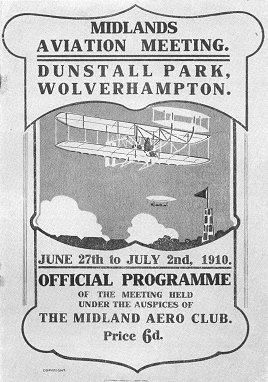 |
The first flight was made by Captain Dawes, on
leave from the army to learn how to fly. He decided to fly around
the trees at the end of the park, but could not turn in time and
sailed over the fence to end up in a field beyond. Thanks to the
atrocious conditions there were a number of spectacular crashes.
James Radley’s Bleriot crashed in a gale and Alec Ogilvie’s
Short-Wright aircraft fell to the ground from a height of 60ft.
Radley and Gibbs also crashed but luckily there were no casualties.
Prizes were distributed on the last
day. Graham White made the first circuit flight and won
the duration prize by keeping his aircraft in the air
for 15 minutes and 38 seconds. Mr. Boyle won the
monoplane class by flying for nearly 8 minutes. Mr.
Grace won the prize for the highest flight, reaching
nearly 600 feet. Mr. G. B. Cockburn won the prize for
the shortest take-off in his Farman biplane over a
distance of 100ft. 5 inches.
|
Mr. Cecil Grace had the most spectacular performance
at the meeting, quickly rising to 500 or 600 feet in his
Short biplane. He flew in widening circles, reaching
Tettenhall and Bushbury before descending to 150 feet
when he turned off the engine, and glided to the centre
of the park, making a perfect landing.
He had been in the air for 27 minutes, 45 seconds, and
was seen by gathering crowds at Tettenhall, Bushbury,
Bilston, Willenhall, and Sedgley. During the flight, Mr.
Claude Grahame White started his aircraft and flew to
between 200 and 300 feet, but his engine was not working
properly, so he landed after fifteen minutes.
On the same day, Mr. Rawlinson flew for seven minutes,
and Mr. C. S. Rolls, and Mr. J. Radley, each completed
one circuit of the course.Thursday started wet and
windy, but conditions soon improved, and at a quarter to
eight Mr. J. Radley brought out his monoplane,
quickly followed by Alan Boyle. The most successful local man was Mr. Barnes, who
kept his machine in the air for 77 seconds. |
|
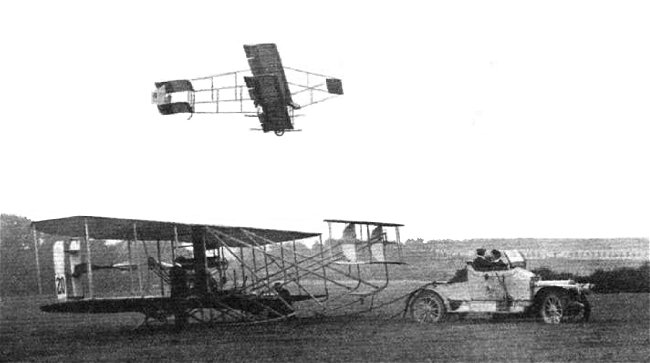
Mr. Claude Grahame Wright on his
Henry Farman aircraft, flying over Mr. Ogilvie's Wright
machine, as it was towed to the starting point. |
|
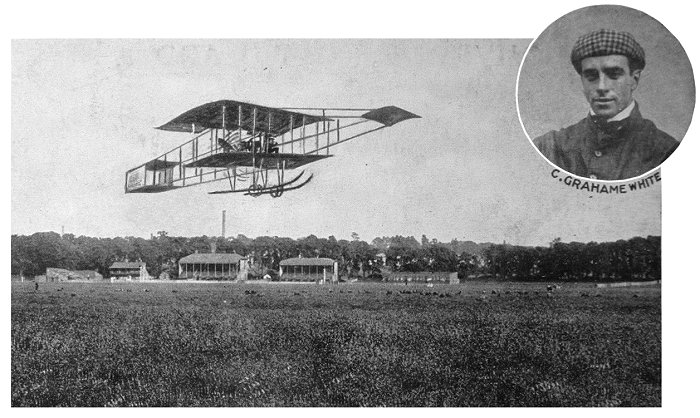
A postcard especially produced for
the event. |
| A Wright biplane won the speed contest, piloted by
Mr. C. S. Rolls, one of the founders of Rolls Royce.
Unfortunately he was killed less than two weeks later
during a similar contest at Bournemouth, which
highlights the danger involved in such events. Granville
Bradshaw piloted the locally built Star monoplane, which
unfortunately failed to fly. |
|
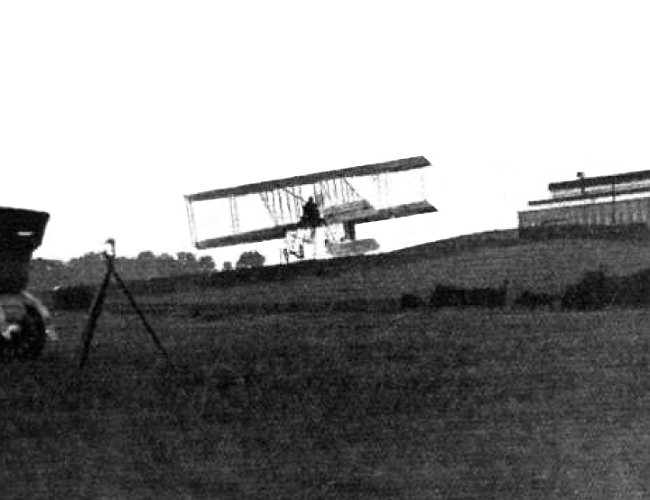
Mr. Rawlinson, in flight on his
Henry Farman aircraft. |
|
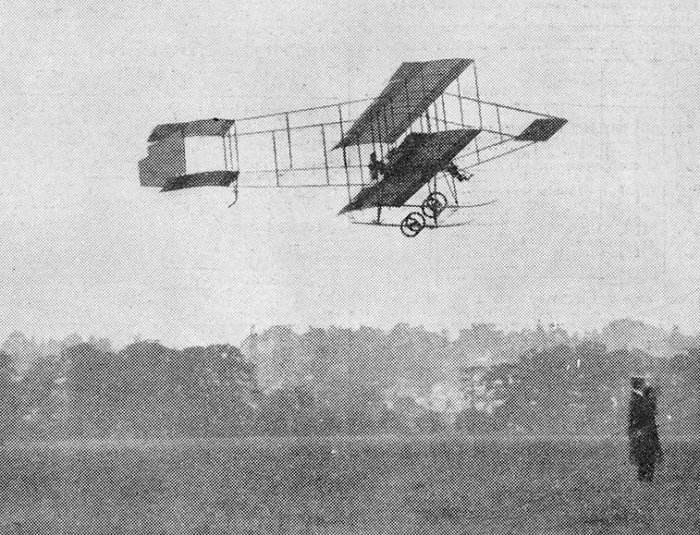
Grahame White in his Farman
biplane. Courtesy of David Clare. |
|
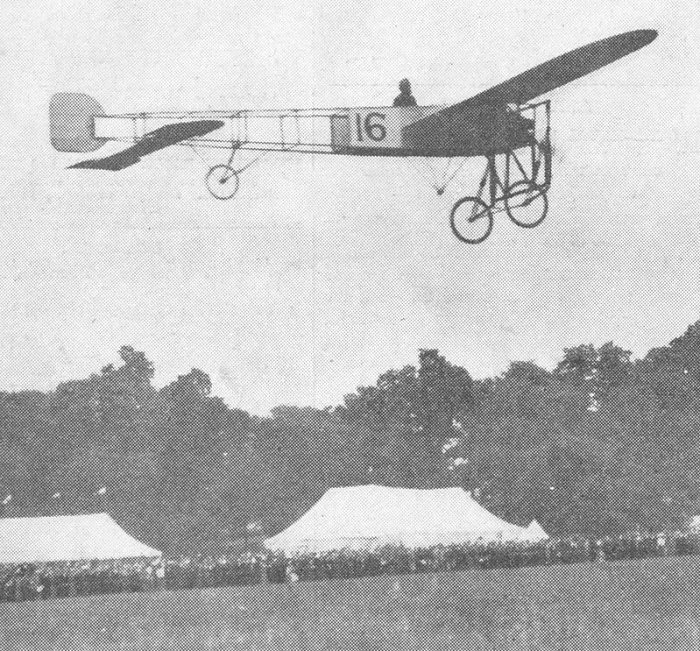
Cecil Grace in his monoplane.
Courtesy of David Clare. |
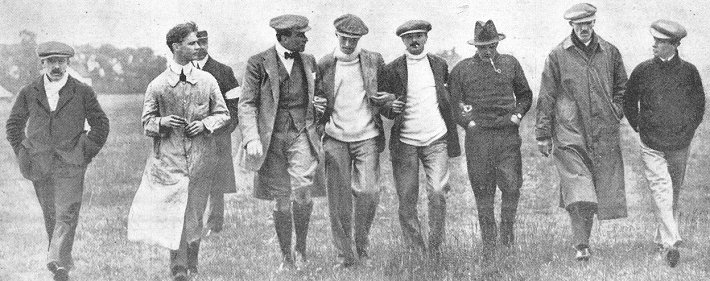
Some of the competitors. Left to
right: Lieut. D. L. Gibbs, Grahame Gilmore, Grahame
White, Astley, Spottiswoode, J. Radley, C. Lane, and the
Hon. Alan Boyle. Courtesy of David Clare. |
|

The Star monoplane. |
|

Another view of the Star monoplane. |
|

A close-up view of the Star
monoplane. |
Other pilots included: Mr. Davies
Mr. A.V. Roe
Mr.
Gilmour
Mr. Mander
Mr. Lane
Mr. Cody
Mr. Holder
Mr.
Frances
Mr. McArdle
Mr. Maxfield |
|
Music was provided by the South Staffordshire
Regiment and the Wolverhampton Military Band. The event proved to be
very popular and aviation meetings were held at Dunstall Park for
several years.
The locally built Star monoplane returned in
1911 with Joe Lisle, son of the company’s owner, Edward Lisle, at
the controls. This time the aircraft successfully flew, but Edward
was so alarmed at the sight, that he banned his son from flying
again.
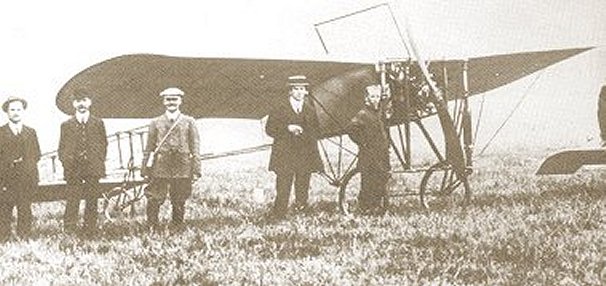
Some of the aviators who took part in 1910. |
 |
|
 |
|
 |
Return to Early
Years At Dunstall |
|
Return to
the contents |
|
Proceed to A
Brief
Return To Racing |
|